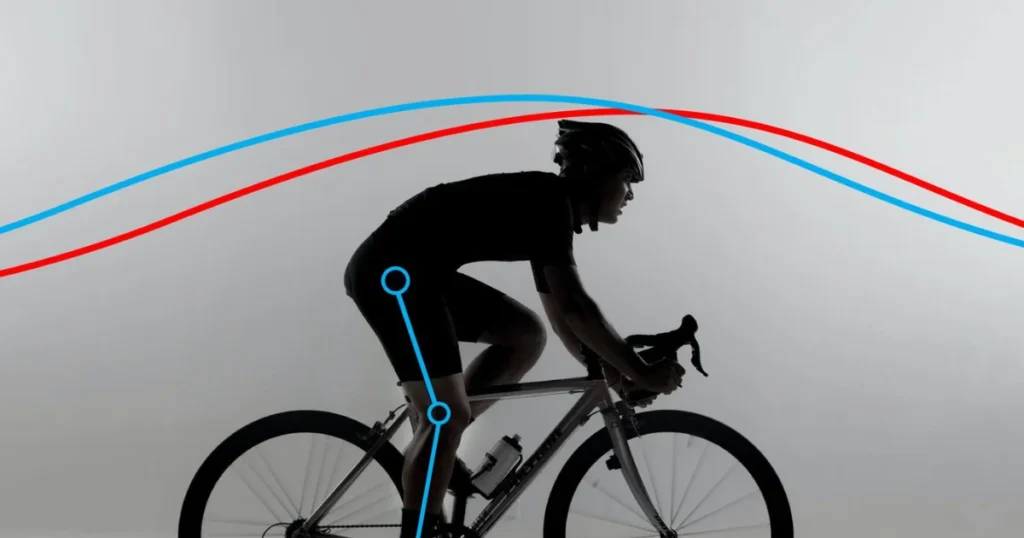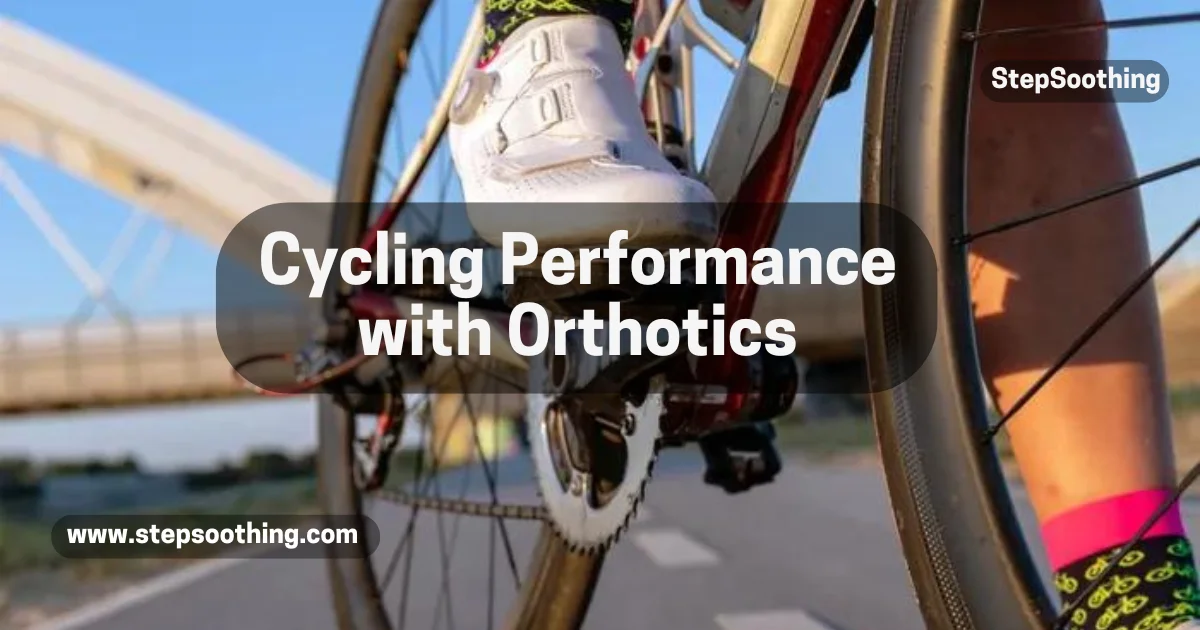Cycling is a fantastic way to stay fit, explore the outdoors, and challenge yourself. But whether you’re a casual rider or a seasoned cyclist, you’ve probably experienced discomfort or fatigue at some point during your rides. One often overlooked solution to these problems is orthotics. Here are five compelling reasons to invest in orthotics to elevate your cycling game and enhance your cycling performance with orthotics.
5 Reasons to Get Cycling Orthotics

Reason #1: Improved Comfort and Reduced Fatigue
Orthotics can provide superior cushioning and support for your feet, which can make a big difference during long rides. They help to alleviate pressure points and reduce foot fatigue, allowing you to ride longer and more comfortably.
When your feet are well-supported, your entire body feels better. Enhanced comfort means you can focus on enjoying the ride rather than being distracted by discomfort. Cyclists who use orthotics often report being able to ride for longer periods without feeling the usual aches and pains.
For example, Sarah, an avid cyclist, shared that after getting orthotics, she no longer experienced the burning sensation in her feet during long rides. This comfort boost helped her increase her endurance and enjoy cycling even more.
Reason #2: Enhanced Power Transfer and Efficiency
Orthotics can help align your feet properly and improve your pedaling mechanics. This means that the power from your legs is transferred more efficiently to the pedals. As a result, you can achieve faster speeds, climb hills more easily, and generally perform better on the bike.
Research supports these claims. Studies have shown that cyclists using orthotics have better power output and efficiency. When your feet are aligned correctly, your muscles can work more effectively, reducing wasted energy and improving your overall performance.
John, a competitive cyclist, noticed a significant improvement in his speed and hill-climbing ability after he started using orthotics. He felt more powerful and efficient, which gave him an edge in races.
Reason #3: Injury Prevention and Rehabilitation
Cycling can sometimes lead to injuries like plantar fasciitis, Achilles tendinitis, and knee pain. Orthotics can help prevent these common issues by providing customized support and alignment for your feet. They address the root causes of these problems, helping you avoid injuries in the first place.
If you’re already dealing with an injury, orthotics can aid in your recovery. By supporting the affected areas and promoting proper alignment, orthotics can help you heal faster and get back to riding.
For instance, Mark struggled with knee pain for years. After getting orthotics, he found that his knee pain significantly decreased, allowing him to ride pain-free and even improve his performance.

Reason #4: Improved Stability and Balance
Orthotics can enhance your stability and balance on the bike, especially during high-intensity efforts or when riding on technical terrain. Improved proprioception, or your body’s ability to sense its position and movement, helps you feel more in control.
This increased stability translates to better handling, cornering, and overall bike control. When you feel more balanced, you’re more confident on the bike, which can make your rides safer and more enjoyable.
Emily, a mountain biker, found that orthotics gave her better control on rough trails. She felt more stable and confident, which improved her overall riding experience.
Reason #5: Customized Support for Your Unique Needs
One of the biggest advantages of orthotics is that they can be tailored to your individual foot structure, cycling biomechanics, and performance goals. Getting a professional fitting ensures that your orthotics provide the optimal level of support and comfort.
Custom-made orthotics are designed specifically for you, addressing your unique needs better than off-the-shelf solutions. This personalized approach can make a significant difference in your cycling experience.
Tom, who rides both road and mountain bikes, found that custom orthotics improved his performance across different types of cycling. The professional fitting process ensured that his orthotics were perfect for his needs.
Conclusion
Investing in orthotics can transform your cycling experience. From improved comfort and performance to injury prevention and enhanced stability, orthotics offer numerous benefits for cyclists of all levels. If you want to elevate your cycling game, consider exploring the world of orthotics. Your feet, and your overall cycling experience, will thank you.
While the initial investment in orthotics might seem high, their long-term benefits make them worth every penny. Quality orthotics are durable and can last for years, providing ongoing support and comfort. For more on orthotic longevity, check out our article on how long orthotics last.
Investing in orthotics is a smart move for any cyclist looking to enhance their comfort, performance, and overall cycling experience. For more insights on whether specific insoles are worth it, visit our detailed review on Superfeet insoles.
Frequently Asked Questions
Q1: How often should I replace my cycling orthotics?
Cycling orthotics typically need to be replaced every 6 to 12 months, depending on usage and care. Factors like material quality, frequency of use, and activity level impact their lifespan. Signs it’s time to replace cycling orthotics include visible wear, reduced support, or persistent discomfort. Proper maintenance like regular cleaning and alternating pairs can extend their life.
Q2: Can I use the same pair of orthotics for both cycling and everyday wear?
It’s generally recommended to have separate pairs of orthotics for cycling and everyday wear. Cycling orthotics are designed specifically for the demands of cycling, with features like increased arch support and metatarsal pads. Using the same pair for both activities may lead to premature wear and reduced effectiveness.
Q3: Do I need to break in my cycling orthotics, or can I wear them right away?
It typically takes about two weeks to break in a new pair of cycling orthotics. During this time, some initial discomfort is normal as your feet adjust to the added support and cushioning. If discomfort persists after two weeks, it’s best to consult with the orthotics provider for potential adjustments.
Q4: Can cycling orthotics help with specific injuries or conditions, like plantar fasciitis or Achilles tendinitis?
Yes, cycling orthotics can help alleviate various foot and lower limb conditions. They provide targeted support and cushioning to address issues like plantar fasciitis, Achilles tendinitis, and metatarsalgia. By correcting biomechanical imbalances and reducing stress on affected areas, cycling orthotics can help prevent and manage these conditions.
Q5: Do I need to see a podiatrist or specialist to get fitted for cycling orthotics, or can I order them online?
It’s recommended to consult with a podiatrist or sports medicine specialist for a proper evaluation and fitting of cycling orthotics. These professionals can assess your specific foot structure, biomechanics, and cycling needs to recommend the most appropriate orthotics. While some off-the-shelf options are available, custom-made cycling orthotics provide the best fit and support for your individual requirements.



